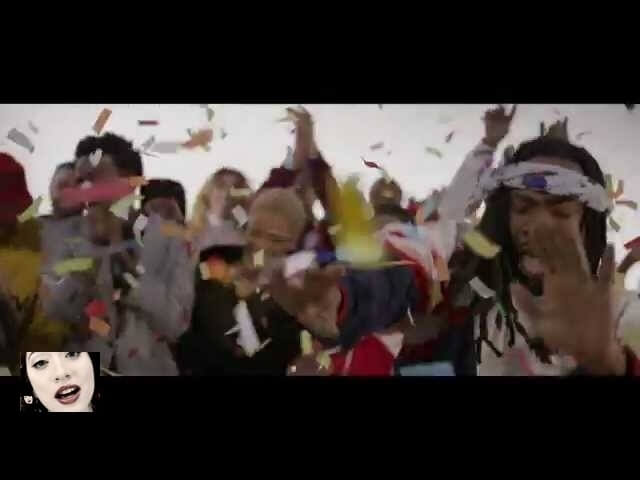We are the world: Apple’s idea of a global pop sound

Last week Apple rolled out its highly anticipated Apple Music platform, which includes a streaming library of 30 million songs; Connect (a Tumblr-like feature for artists to share multimedia content); and a suite of streaming radio channels including Beats 1, which features an intensely curated cast of talent broadcasting original programming from studios in Los Angeles, New York City, and London. So far, Apple is making as much or even more of a big deal about Beats 1 as any of the other features, which is interesting because Apple’s previously focused on delivering content rather than creating it, and because radio isn’t exactly the hottest listening format these days. On the other hand, aside from having Taylor Swift and Dr. Dre, the streaming library’s not substantially different from what Spotify and Tidal have to offer, and while Connect has the potential to facilitate something interesting (especially if it starts getting seeded with content from smaller, more engaged artists), right now it’s mostly just a bunch of bland posts from U2’s social media team.
As much as it’s wrapped Beats 1 in the trappings of a last-century medium (DJ banter, call-in shows, insisting on calling it “radio”), Apple’s also given its project a distinctly modern mission to be a “truly global listening experience” and develop a style that’ll play in all 100 countries where Beats 1 streams. So what’s their attempt at a global listening experience actually sound like? Young, utopian, and so far quite a bit like American and British radio (or at least a fantasy version of it).
Along with its international reach (tune in almost anytime to hear a DJ listing off the various countries, cities, states, territories, and protectorates the station broadcasts to), Beats 1 also likes to play up the diversity and autonomy of its on-air talent, which mixes radio veterans like Ebro Darden and Julie Adenuga with musicians ranging from Q-Tip to Vampire Weekend front man Ezra Koenig to Elton John. The name you hear most often on the station is Zane Lowe, the British DJ Zane Lowe, who acts as something like Beats 1’s captain, and whose sensibilities are strongly felt well outside the show he hosts at noon each day (and rebroadcast at midnight for listeners outside the Western Hemisphere).
Lowe’s ported over the “Hottest Record In The World” feature from his popular show on BBC Radio 1 in the form of Beats 1’s “World Record,” the one song per day that’s guaranteed to be heard on every show. It’s the purest distillation of Lowe’s aesthetic, which provides the foundation for Beats 1’s aesthetic. He likes songs and performers that are energetic, genre-ambiguous, and close enough to the leading edge of popular taste to qualify as daring but not close enough to weird out a critical number of listeners—it can sometimes feel like a radio station birthed by an iPod commercial.
The other DJs are free to otherwise play what they want, but there’s been a lot of overlap on particularly Lowe-like tracks. As a result there are a number of relatively obscure but eccentrically appealing acts getting spins on Beats 1 on par with what Taylor Swift gets on KISS FM—the effect can be like slipping into an alternate universe where the biggest pop songs in the world are D.R.A.M.’s Ween-meets-Goodie Mob SoundCloud smash “Cha Cha” and Wolf Alice’s breakbeat grunge cut “Bros.” That’s a refreshingly interesting place to be, when the other options are satellite radio, which tends to keep styles rigidly divided, and terrestrial radio, which relies on a strategy of taking the six most broadly appealing songs of any particular genre and playing them until no one wants to hear them again.
For a radio station that’s supposed to be a global listening experience, Beats 1 has so far been conspicuously light on music made outside the U.S. and U.K. and in languages other than English. Most of that was on the debut of Vice Music’s show where the hosts mixed recordings from the Western Sahara with swashbuckling tales from their African travels. In the week I’ve been listening I haven’t heard one K-pop song or South African EDM track or even much dancehall that you can’t already hear on American terrestrial radio.
Then again, Beats 1’s project of bridging different musical cultures is still in its early stages, and it’s making some modest progress. It’s already starting to bring together different radio cultures. Adenuga comes from London’s Rinse FM, and she brings along an uncompromising approach to dance music (on her first show she spun DJ Zinc’s 15-year-old jungle track “138 Trek”) that comes straight out of U.K. pirate radio. Darden has only minutely altered the style he developed on legendary New York rap station Hot 97 for a broader audience, and his broadcasts are full of borough shout-outs and selections from New York rap’s glory days. Meanwhile, St. Vincent’s Annie Clark hosts a show where her selections are tailored to the twists and turns of callers’ quirky life stories, a conceit that would fit in nicely on the fringier end of American independent radio.
Beats 1 will probably have to lock down an audience in the U.S. and other primary Apple markets before it can start incorporating enough music from places outside North America and Europe to be a truly global concern. It remains to be seen whether the mix they’ve got now is too weird to bring in enough listeners to justify its cost. Will mainstream listeners be able to bond with a station that puts grime and jungle next to rock and rap? One that doesn’t play “Trap Queen” or T. Swift every 12 minutes? The sound that Beats 1 has been sketching out—a shiny pop utopia that crosses genre borders as easily as it does geographical ones—is already enough to make me hope so.